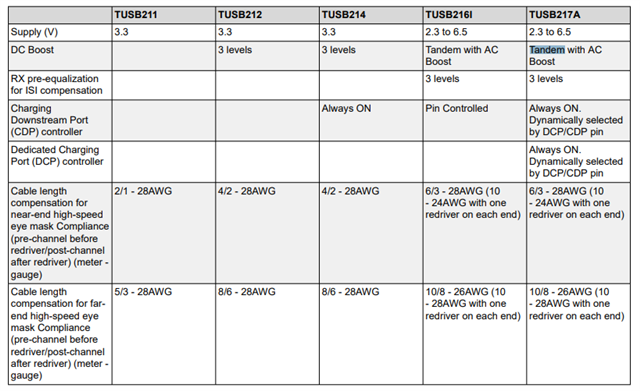Other Parts Discussed in Thread: TUSB216I, TUSB217-Q1
Hi team,
I have couple of questions on TUSB21x family, i looked through the e2e history question but no clear answer:
1. RX pre-equalization for ISI compensation: can you give an example of the problem that TUSB216I/7 could solve but TUS211/2/4 can't? Is RX pre-equalization equal to AC boost?
2. Can you explain more about the last two column?
- USB2.0 is bidirectional protocol and TUSB21x should compensate for either direction (correct me if i am wrong), why does the pre-channel and post-channel spec make sense?
- Why far-end cable length is much higher than near end?
3. Customer need to use 5.4m usb cable to connect two ECU (saying headunit and rear seat usb box), could you provide the recommend solution? There are two option in consideration, 1 TUSB21x in the mid of cable (with a bridge board), or two TUSB21x at both end of the ECU.

Regards
Dongbao

